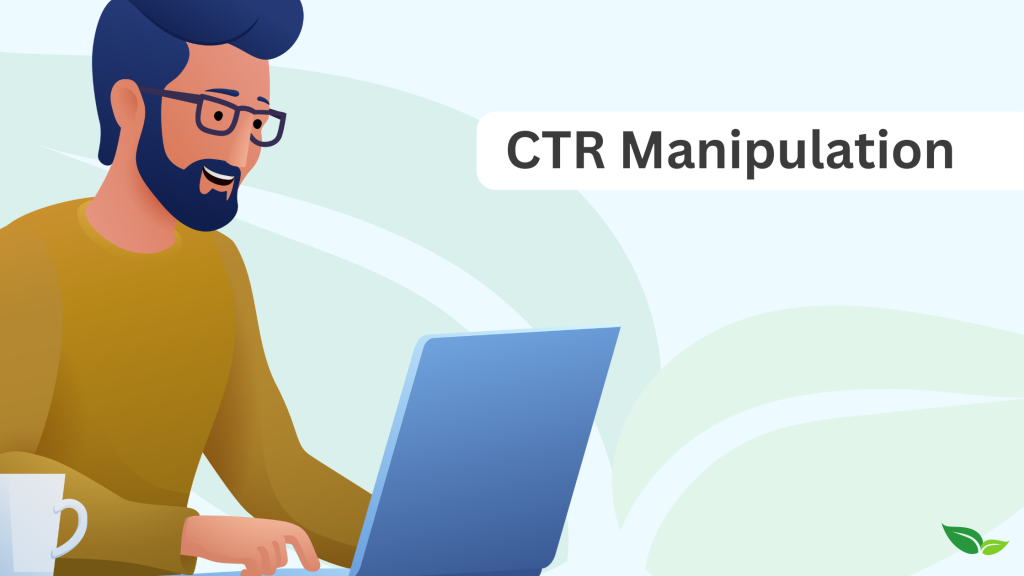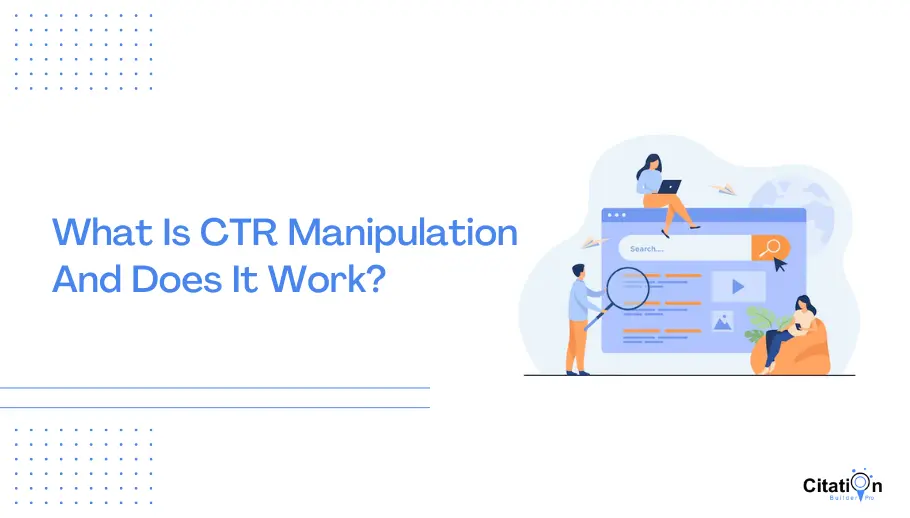Enhance Your Click-Through Rates With CTR Manipulation
Enhancing click-through rates (CTR) with critical manipulation is an interesting undertaking for marketers seeking to optimize their digital presence. As we discover the techniques that can elevate CTR, we should likewise think about the effects of credibility and depend on that underpin sustainable involvement.
Comprehending Click-Through Rate
In the realm of electronic marketing, recognizing click-through price (CTR) is important for assessing the effectiveness of on-line projects. CTR is specified as the proportion of individuals who click on a specific web link to the total variety of customers that watch a promotion, e-mail, or page. It works as an essential performance indicator (KPI) essential for assessing the success of different advertising and marketing approaches.
A higher CTR indicates that the web content is reverberating with the target audience, recommending that the messaging, visuals, and call-to-action components are reliable. On the other hand, a low CTR may signal the demand for optimization in imaginative properties or targeting strategies. Variables affecting CTR include the top quality and relevance of the web content, the positioning of phone calls to activity, and the general user experience.
To determine CTR, divide the variety of clicks by the overall perceptions and increase by 100 to acquire a percentage. On a regular basis checking and evaluating CTR allows marketing experts to make data-driven choices, enhancing advocate enhanced efficiency. Thus, an extensive understanding of CTR empowers organizations to improve engagement, inevitably attaining and driving conversions advertising purposes.
Psychological Triggers for Interaction
Reliable involvement in digital advertising and marketing commonly pivots on comprehending mental triggers that affect user actions. Identifying these triggers allows marketing experts to craft techniques that resonate with their target market, inevitably enhancing click-through rates.
One famous trigger is the concept of deficiency. They are more likely to act quickly to stay clear of missing out on out when users perceive that an offer is limited in time or availability. Furthermore, social evidence plays a critical duty; endorsements and customer testimonials can substantially enhance trustworthiness, triggering prospective customers to engage with the web content or product
An additional powerful mental trigger is inquisitiveness. Stimulating a user's passion with interesting concerns or declarations can force them to explore better. Likewise, using the concept of reciprocity, such as providing valuable sources or insights, cultivates a sense of obligation that urges individuals to participate in return.
Lastly, emotional allure can not be neglected. Web content that connects on an emotional degree can elicit more powerful responses, driving individuals to click via to read more. By leveraging these psychological triggers, marketers can develop more efficient projects, eventually leading to enhanced involvement and greater click-through rates.
Crafting Compelling Headings
An engaging headline works as the critical entrance to electronic content, catching the focus of potential visitors and luring them to click via. Crafting such headlines needs a critical technique, mixing creativity with an understanding of audience psychology.
To start, clarity is vital; headlines ought to communicate the essence of the material without uncertainty. Using powerful action verbs can instill a sense of urgency, triggering instant interaction. In addition, integrating numbers or listings can improve the viewed value of the material, as readers typically appreciate structured information.
Emotional resonance additionally plays a significant role. Headlines that stimulate inquisitiveness, shock, or perhaps dispute can significantly increase click-through prices. It is crucial to stabilize intrigue with credibility to stay clear of misinforming the audience.

Visual Aspects That Attract Clicks
Engaging headings can significantly enhance click-through rates, yet the visual components coming with these headlines play an equally essential role in bring in interest. The assimilation of distinctive visuals, such as pictures, video clips, and graphics, can enhance individual engagement and tempt possible visitors to click.
Top quality photos pertinent to the content can evoke feelings and develop an extra immersive experience. Infographics can distill intricate information right into absorbable visuals, making them a lot more shareable and eye-catching to individuals looking for quick insights. Additionally, video clips typically surpass static photos in capturing attention, as they give dynamic content that can communicate messages efficiently.
Color design likewise play a critical role; contrasting shades can highlight crucial elements, attracting the customer's eye to the call-to-action switches or essential information. Furthermore, constant branding through aesthetic elements strengthens trustworthiness and recognition, which can enhance count on among customers.
Inevitably, the critical use aesthetic components not only enhances compelling headlines but likewise acts as an effective device to boost click-through prices, guaranteeing your web content stands out in a congested electronic landscape. By thoughtfully curating these aspects, marketing professionals can develop a much more efficient and enticing on-line visibility.

Moral Considerations in CTR Control
The increase of electronic advertising has yielded significant moral considerations regarding click-through rate (CTR) control. As services aim to catch consumer attention in a congested digital landscape, the temptation browse this site to use deceptive practices boosts. These methods might include misleading headlines, clickbait techniques, or misrepresentative imagery that promise more than the material provides.
Such methods can weaken consumer trust and damages brand online reputation, eventually bring about a reaction that outweighs any short-term gains. Morally, online marketers have to balance the need for higher CTRs with the duty to give straightforward, transparent material that respects customer knowledge.
Additionally, regulative bodies are progressively inspecting digital advertising practices, stressing the significance of adhering to moral criteria (CTR Manipulation Press Release). Failing to conform can cause charges and ruined credibilities
To cultivate durable connections with audiences, brand names need to focus on credibility and worth in their material. Emphasizing quality over quantity will not only improve click-through rates sustainably yet additionally grow a devoted consumer base. As electronic advertising and marketing Visit Website proceeds to advance, moral factors to consider bordering CTR control will remain extremely important, forming the future of liable marketing methods.
Conclusion

Enhancing click-through prices (CTR) via calculated adjustment is an interesting undertaking for online marketers looking for to maximize their electronic visibility. CTR is defined as the proportion of customers who click on a particular link to the complete number of customers who see a page, ad, or e-mail .A greater CTR suggests that the web content is reverberating with the target audience, recommending that the messaging, visuals, and call-to-action elements are reliable. Elements influencing CTR consist of the high quality and significance of the material, the positioning of telephone calls to activity, and the overall user experience.
The increase of digital advertising and marketing has actually content brought forth significant ethical factors to consider regarding click-through price (CTR) manipulation.